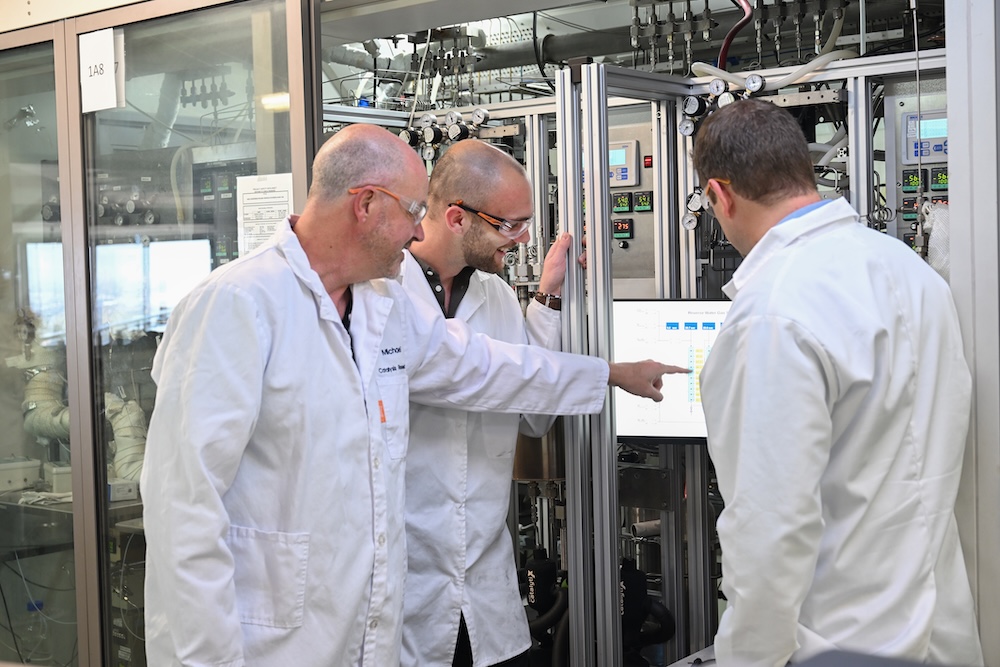Report on the University System of Georgia Campus Energy and Resiliency Group Summit
Executive Summary
On October 1, the second summit of the University System of Georgia (USG) Campus Energy and Resiliency Group (CERG) was convened, led by the Georgia Institute of Technology’s Office of Sustainability. The summit brought together representatives from six major Georgia universities to advance collaborative energy management strategies. This initiative directly addresses multiple United Nations Sustainable Development Goals (SDGs) by focusing on energy efficiency, sustainable infrastructure, and multi-stakeholder partnerships to foster resilient and sustainable campus communities.
Key Objectives and SDG Alignment
The summit’s primary purpose was to establish a unified approach to energy management, leveraging collective expertise to reduce energy consumption and enhance efficiency. The group’s work aligns with the following Sustainable Development Goals:
- SDG 7 (Affordable and Clean Energy): By focusing on reducing energy use and increasing efficiency, the initiative directly contributes to Target 7.3, which aims to double the global rate of improvement in energy efficiency.
- SDG 11 (Sustainable Cities and Communities): The effort to create energy-efficient campuses contributes to making these institutional communities more sustainable, inclusive, and resilient.
- SDG 13 (Climate Action): Reducing energy consumption is a critical strategy for mitigating climate change, directly supporting actions to combat its impacts.
- SDG 17 (Partnerships for the Goals): The collaboration between Georgia Tech, the University of Georgia, Emory University, Georgia State University, Kennesaw State University, and the University of West Georgia exemplifies a multi-stakeholder partnership to achieve common sustainability goals.
Keynote speaker Sandra Neuse, USG Vice Chancellor of Real Estate and Facilities, emphasized that the collaboration is an “investment in the future and a model for our students,” linking the initiative to SDG 4 (Quality Education) by promoting education for sustainable development.
Strategic Discussion Points
The summit centered on four key strategic areas for developing a comprehensive energy management framework. These pillars are designed to create measurable progress toward sustainability targets.
- Establishment of Statewide USG Energy Targets: The group discussed setting unified energy reduction goals for all participating institutions, providing a clear, system-wide benchmark for progress in line with SDG 7.
- Assessment of Energy Use Intensity (EUI): Participants agreed on the importance of assessing EUI, a metric measuring energy use per square foot. This standardizes performance measurement, which is crucial for upgrading infrastructure sustainably as outlined in SDG 9 (Industry, Innovation, and Infrastructure).
- Development of a Best Practices Framework: A central objective is to create a shared repository of strategies for energy efficiency and conservation. This collaborative platform embodies the principles of SDG 17, allowing institutions to learn from one another and accelerate progress.
- Standardization of Utility Data Tracking: The development of uniform standards for tracking utility data was identified as essential for accurate monitoring, reporting, and verification of energy savings, a foundational requirement for accountability under SDG 7 and SDG 13.
Future Outlook
Driven by rising utility rates and a commitment to sustainability, the CERG initiative represents a significant step forward for the USG system. As stated by Jennifer Chirico, Georgia Tech’s Associate Vice President of Sustainability, setting energy targets is a critical aspect of advancing campus sustainability. The Georgia Tech Office of Sustainability will continue its engagement with USG campuses, with the next summit scheduled for Spring 2026 at Kennesaw State University to ensure continued momentum and collaborative action toward achieving these shared sustainability goals.
SDGs Addressed or Connected to the Issues Highlighted in the Article
-
SDG 7: Affordable and Clean Energy
- The article’s central theme is energy management, focusing on “reducing energy use, increasing energy efficiency, and establishing shared resources.” This directly aligns with the goal of ensuring access to affordable, reliable, sustainable, and modern energy for all. The summit’s purpose was to “further the conversation around energy management for campuses statewide.”
-
SDG 11: Sustainable Cities and Communities
- University campuses function as small communities or significant parts of a city’s infrastructure. The initiative to create a “Campus Energy and Resiliency Group (CERG)” and improve energy management contributes to making these settlements more sustainable and resilient. The focus on a “framework for best practices” for energy efficiency helps reduce the environmental footprint of these institutions.
-
SDG 4: Quality Education
- The article connects the energy efficiency initiative to education by quoting Sandra Neuse, who states it is “a model for our students, who will be the next generation of leaders.” This implies that the practical application of sustainability on campus serves as an educational tool, promoting the knowledge and skills needed for sustainable development.
-
SDG 17: Partnerships for the Goals
- The entire initiative described is a partnership. The article highlights that the summit “was inspired by the potential of collaboration throughout the USG” and that Georgia Tech is “excited to partner with our peers across USG to share best practices.” The participation of six different universities exemplifies a multi-stakeholder partnership to achieve common sustainability goals.
Specific Targets Identified Based on the Article’s Content
-
Target 7.3: By 2030, double the global rate of improvement in energy efficiency.
- This target is directly addressed through the summit’s key objectives, which include “setting statewide USG energy targets” and developing a “framework for best practices within the USG to share strategies for increasing energy efficiency and conservation.” The entire conversation is centered on improving energy efficiency across Georgia’s university campuses.
-
Target 11.b: By 2020, substantially increase the number of cities and human settlements adopting and implementing integrated policies and plans towards inclusion, resource efficiency, mitigation and adaptation to climate change, resilience to disasters…
- The formation of the “Campus Energy and Resiliency Group” and its goal to set “statewide USG energy targets” represent the implementation of an integrated plan for resource (energy) efficiency and resiliency across multiple campuses (human settlements). This collaborative approach aims to create a unified policy and framework for the entire University System of Georgia.
-
Target 4.7: By 2030, ensure that all learners acquire the knowledge and skills needed to promote sustainable development…
- The article implies this target when it describes the initiative as “a model for our students.” By actively pursuing and demonstrating sustainable energy management, the universities provide a real-world learning environment, helping students acquire practical knowledge and skills related to sustainable development.
-
Target 17.17: Encourage and promote effective public, public-private and civil society partnerships, building on the experience and resourcing strategies of partnerships.
- The summit is a clear example of an effective public-public partnership. Six state universities (“Georgia Tech, the University of Georgia, Emory University, Georgia State University, Kennesaw State University, and the University of West Georgia”) have come together “organically to share their collective expertise in energy efficiency and sustainability.” This collaboration is designed to leverage shared knowledge and resources to achieve a common goal.
Indicators Mentioned or Implied in the Article
-
Energy Use Intensity (EUI)
- The article explicitly mentions “Assessing Energy Use intensity, a metric that measures energy use per square foot per year at a building level.” This is a direct, quantitative indicator that can be used to measure and compare energy efficiency across different buildings and campuses, tracking progress towards energy reduction targets.
-
Establishment of Statewide Energy Targets
- One of the key ideas discussed was “Setting statewide USG energy targets.” The creation and adoption of these targets serve as a clear indicator of commitment and a benchmark against which future performance can be measured.
-
Development of a Framework for Best Practices
- The goal of “Developing a framework for best practices within the USG” is an indicator of progress. The existence of this framework would signify that a systematic approach to sharing and implementing energy efficiency strategies has been established.
-
Standardized Utility Data Tracking
- The article mentions the objective of “Developing standards for how utility data is tracked.” The implementation of such standards is a foundational indicator, as it ensures that the data used for other indicators (like EUI) is consistent, reliable, and comparable across all participating institutions.
Table of SDGs, Targets, and Indicators
| SDGs | Targets | Indicators |
|---|---|---|
| SDG 7: Affordable and Clean Energy | 7.3: Double the global rate of improvement in energy efficiency. |
|
| SDG 11: Sustainable Cities and Communities | 11.b: Implement integrated policies and plans towards resource efficiency and resilience. |
|
| SDG 4: Quality Education | 4.7: Ensure all learners acquire knowledge and skills for sustainable development. |
|
| SDG 17: Partnerships for the Goals | 17.17: Encourage and promote effective public partnerships. |
|
Source: news.gatech.edu







